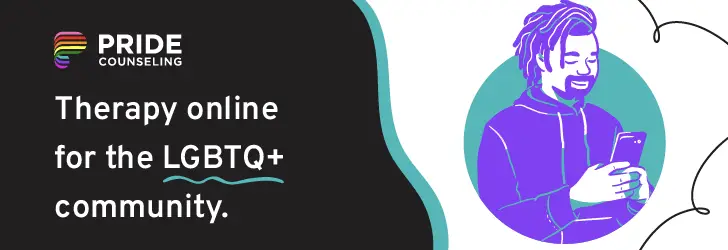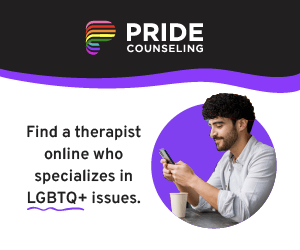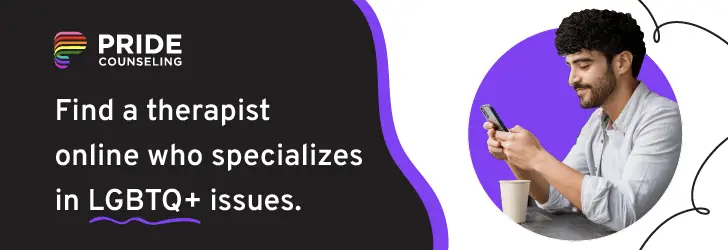As a BetterHelp affiliate, we receive compensation from BetterHelp if you purchase products or services through the links provided
When exploring your sexual orientation, you may come across terms like asexuality and demisexuality. Understanding the nuances between these two orientations can help you determine if either one resonates with your personal experiences and feelings. Asexuality is characterized by a lack of sexual attraction toward others, whereas demisexuality describes individuals who only experience sexual attraction to those with whom they share a strong emotional bond.
Both asexuality and demisexuality exist on a spectrum, and people may identify with different aspects of these orientations at various points in their lives. It’s essential to recognize that sexual attraction and gender identity can be fluid, and self-discovery is a personal journey for each individual. As you navigate your understanding of yourself, remember that there is no right or wrong way to experience attraction or relationships.
Key Takeaways
- Explore the differences between asexuality and demisexuality to determine which resonates with your experiences.
- Understand that both orientations exist on a spectrum and can shift throughout life.
- Embrace individuality and personal self-discovery as you navigate your understanding of attraction and relationships.
 Understanding Sexual Attraction
Understanding Sexual Attraction
Sexual attraction is a complex feeling that varies from person to person. It’s that spark or desire towards someone that may lead to sexual intimacy or encounters. For some, this attraction comes easily, while for others, it requires a deeper emotional connection.
As you explore your feelings of sexual attraction, it’s important to recognize that everyone experiences sex and desire differently. Some people might have a strong appetite for sexual activity, while others might have little to no interest in engaging in sexual encounters. This diversity in how people experience attraction leads to different sexual orientations, such as asexuality and demisexuality.
Asexuality is defined as a sexual orientation where someone experiences little to no sexual attraction towards others. They might also have a low desire for sexual encounters or intimacy. However, it’s essential to note that every asexual person is unique in how they approach sexual intimacy.
On the other hand, demisexuality is a sexual orientation where people only experience sexual attraction to those they have close emotional connections with. This means that a demisexual person won’t feel that spark of sexual desire until they’ve established a strong bond with someone. It’s important to remember that forming a bond doesn’t guarantee a person will feel sexual attraction, but sexual activity must be possible.
Here are some key points to help you understand these sexual orientations better:
- Asexuality implies little to no sexual attraction or desire for sexual encounters.
- Demisexuality encompasses sexual attraction only after forming a close emotional bond.
- Every individual experiences sexual attraction, sex, and desire differently.
- Sexual orientation is a spectrum, and your feelings might not fit neatly into a specific category.
As you explore your sexual orientation, giving yourself time and patience is vital to understand your feelings and preferences. Reflecting on your past experiences and emotional connections can help you identify where you might fall on the spectrum. Remember, it’s okay if you don’t have all the answers right away or if your feelings change over time. The most important thing is to be true to yourself and honor your unique experience of sexual attraction.

Defining Asexuality and Demisexuality
When exploring your understanding of your sexual identity, it’s essential to know the differences between asexuality and demisexuality. These are distinct orientations; understanding their nuances can help you better understand your experience.
Asexuality is a sexual orientation in which an individual does not experience sexual attraction towards others. Though they may engage in activities like cuddling or holding hands, asexually inclined people might not feel the urge to have sex. It’s essential to remember that this doesn’t mean they are celibate. Instead, it just means they don’t feel sexual desires for others.
Here are some key points about asexuality:
- No sexual attraction towards others
- Not necessarily celibate
- Can still engage in romantic or emotional connections
On the other hand, demisexuality is a sexual orientation where an individual only feels sexual attraction once a strong emotional bond is formed. They might develop sexual feelings and attraction after developing a close emotional relationship with another person or persons. This contrasts significantly with asexuality, as demisexual individuals do feel sexual desire, but only after an emotional bond is established.
Important aspects of demisexuality include:
- Sexual attraction is connected to a strong emotional bond
- Requires emotional intimacy before feeling sexual attraction
- Differentiates from asexuality in the presence of sexual feelings after emotional connection
Though both asexuality and demisexuality fall under the broader umbrella of diverse orientations, they have distinguishing characteristics. Identifying with either label depends on understanding your experiences with attraction, emotion, and intimacy. Remember these definitions and aspects while reflecting on your thoughts and feelings, and remember that each person’s experience is unique and valid.

Gender and Sexuality
When exploring your sexuality, it’s important to consider the various aspects that come into play, such as gender, orientation, and sexual identity. By understanding these components, you can better identify where you land on the spectrum.
Gender identity refers to how you perceive your gender, which may or may not align with your biological sex. This means that you may identify as male, female, non-binary, or another unique identity. It is essential to distinguish between gender and sex as the latter refers to your biological characteristics, while gender is a social construct.
Sexual orientation is about who you’re attracted to romantically, emotionally, and sexually. This includes orientations like heterosexual, homosexual, bisexual, pansexual, asexual, and demisexual. People identifying as lesbian, gay, or queer also fall under sexual orientation. Understanding your sexual orientation is essential for accurately distinguishing between asexuality and demisexuality.
The LGBTQ+ community comprises individuals identifying as lesbian, gay, bisexual, transgender, queer, or questioning their sexuality (LGBTQ+). This community is an inclusive space that encompasses a wide range of gender and sexual identities, such as the ones we’ve mentioned earlier in this section.
Here are some examples of sexual orientation and gender identity:
- Heterosexual: attraction to the opposite sex
- Homosexual: attraction to the same sex. This includes gay men and lesbians.
- Bisexual: attraction to both men and women
- Pansexual: attraction regardless of gender
- Transgender: a person whose gender identity is different from their assigned sex at birth
- Non-binary: a person with a gender identity that is not exclusively male or female
Now, let’s dive deeper into asexuality and demisexuality:
- Asexual: no sexual attraction to others. This doesn’t necessarily mean a lack of romantic attraction.
- Demisexual: sexual attraction only occurs after forming a strong emotional bond with someone.
Remember, your sexual orientation and gender identity are valid and unique. Embrace your truth and be open to learning about yourself as you explore your sexuality. As you continue to learn and grow, you’ll discover where you fit within the diverse and beautiful spectrum of gender and sexuality.
Understanding the Spectrum
Asexual Spectrum
The asexual spectrum is a range of diverse orientations related to asexuality. It includes a variety of identities, such as asexual, demisexual, and graysexual, among others. Asexuality is when a person experiences little to no sexual attraction to others. People on the asexual spectrum often have unique experiences and feelings toward sex, intimacy, and relationships while sharing some common characteristics.
Low Sex Drive and Libido
It’s essential to differentiate asexuality and its spectrum from the low sex drive or libido concept. People with low sex drive or libido might experience a decreased interest in sexual activity, but it doesn’t necessarily mean they identify themselves as asexual or on the asexual spectrum. Various factors, including physical health, mental health, and relationship dynamics, can contribute to low sex drive and libido.
Difference Between Asexuality, Graysexuality, and Demisexuality
- Asexuality: Asexual individuals typically experience minimal to no sexual attraction towards other people. It doesn’t mean they lack emotional connections or romantic feelings; it simply refers to their experience of sexual attraction.
- Graysexuality (Graysexual): Graysexual individuals fall in between the asexual and allosexual (non-asexual) spectrum. They might experience sexual attraction occasionally or under specific circumstances. Graysexuality encompasses a wide range of experiences and expressions of sexual attraction.
- Demisexuality: Demisexual individuals only experience sexual attraction once they’ve formed a strong emotional bond with someone. Their sexual attraction is contingent upon their emotional connections rather than immediate physical or aesthetical attraction.
Each of these identities has unique characteristics and experiences on the asexual spectrum. You may find that one of these identities resonates with you as you explore your feelings and attractions. Understanding the spectrum and its nuances can help you gain a clearer insight into your own experiences and empower you to embrace your authentic self.

Emotional Connections and Relationships
When trying to understand if you’re asexual or demisexual, it’s essential to evaluate how you form emotional connections and relationships with others. Let’s dive deeper into the various aspects of emotional bonding and its role in romantic relationships and friendships.
Feeling an emotional bond with your partner is a common experience in any relationship, be it romantic or platonic. For some, emotional relationships can also take the form of queer platonic bonds, which transcend the boundaries of a traditional friendship and offer a deeper, non-romantic connection.
For those identifying as demisexual, strong emotional connections are particularly important, as they usually form a prerequisite before experiencing sexual attraction. This might take some time, and the duration can differ from one person to another. For instance, it could take a few months or even years for a demisexual individual to feel sexually attracted to their partner.
Establishing open communication plays a significant role in nurturing close bonds and understanding one another’s emotional needs. It’s essential for both parties to feel comfortable discussing their feelings and attractions to enhance their emotional relationship.
Besides considering the nature of the emotional bond, it’s also crucial to distinguish between romantic and primary attractions. Primary attraction is the initial, instinctual attraction towards someone, while romantic attraction develops over time as the emotional bond grows stronger. In demisexuality, the primary attraction doesn’t necessarily lead to sexual desires but can manifest as a deep friendship or an emotionally close partnership.
Analyzing how you experience emotional connections and their role in your relationships will help you identify whether you’re asexual, demisexual, or fall somewhere in between. Knowing and understanding your emotional preferences and needs is a great starting point for building fulfilling and healthy relationships.
 Identity and Self-Discovery
Identity and Self-Discovery
Coming to Terms With Your Identity
Coming to terms with your identity may take time as you consider various aspects of your lifestyle, preferences, and feelings. Remember that it’s normal to question your sexuality, and it’s essential to be honest with yourself. You might find yourself drawn more towards asexuality, in which you experience no sexual attraction to others, or demisexuality, where you only experience sexual attraction after forming a strong emotional connection. Listening to your feelings and reflecting on your relationships can help you better understand your preferences and attractions.
Recognizing Emotional and Sexual Attractions
- Crushes: Pay attention to romantic inclinations or feelings you’ve had for others. What sparked these feelings? Was it emotional closeness, shared experiences, or physical attraction?
- Emotional connection: Note how intensely you form emotional connections with others. Demisexuals tend to require a deeper emotional bond before experiencing sexual attraction, while asexuals might not feel any sexual attraction at all.
- Appearance vs. interest: Reflect on whether you’re drawn to someone’s appearance or more interested in their personality, shared interests, and emotions. Understanding these two types of attractions can help you distinguish between demisexuality and asexuality.
Dealing With Misconceptions
There may be many misconceptions surrounding asexuality and demisexuality. Recognize that these misunderstandings might stem from a lack of awareness or understanding. As you navigate your own identity, remember that:
- Identity: Asexuality and demisexuality are legitimate sexual orientations, and respecting your feelings and acknowledging your identity is essential.
- Coming out: Remember that coming out is a personal decision; only you can decide if and when you want to share your identity with others.
- Lifestyle: Your sexual orientation does not dictate how you should live your life. You can still pursue meaningful relationships, friendships, and experiences that align with your values and desires.
By acknowledging and addressing these potential misconceptions, you can better understand your own identity and experience greater self-awareness.
Testing and Validation
When trying to determine if you’re asexual or demisexual, taking a test can be a helpful way to pinpoint your feelings and experiences. Various quizzes and tests available online can provide insights into your sexual preferences and attractions. By answering a series of questions about your thoughts and feelings, these tests can help you better understand your sexuality.
One notable test to consider is the Demisexual Test on wikiHow. This quiz evaluates your attraction levels and could reveal if you tend to develop emotional connections before experiencing sexual attractions. Another test to explore is the Which Kind of Asexual (“Ace”) Am I? quiz on AllTheTests. This test assists in discovering where you fall on the asexuality spectrum, including whether you might be ace, demi, gray, or cupio.
Remember, while these tests can be informative, they should not be the sole basis for defining yourself or your sexuality. It’s crucial to consider the validity of these tests, as they are often not scientifically validated or backed by experts. Their primary purpose is to encourage self-exploration and provide guidance, and their results can vary depending on the questions asked and your interpretation of them.
Here are some tips to keep in mind when taking these tests:
- Be honest with yourself when answering questions, as this will provide more accurate results.
- Pay attention to the phrasing and context of the questions, as answers may differ based on your interpretation.
- Take multiple tests to compare results and gain a broader perspective on your sexual orientation.
- Understand that these tests are not diagnostic tools but serve as a starting point for self-reflection and evaluation.
In conclusion, taking online tests can be valuable in understanding if you’re asexual, demisexual, or somewhere else on the spectrum. Just remember to consider the validity of these tests and utilize them as guidance, not rules. Ultimately, your journey toward understanding your sexuality is personal, and it’s essential to trust your unique experiences and feelings.
Resources and Support
If you’re questioning whether you’re asexual or demisexual, numerous resources and support systems are available to help you better understand your feelings and experiences.
Online Resources: The internet offers a wide array of information and community support for both asexuals and demisexuals. The Demisexuality Resource Center provides resources and information for demisexuals, their partners, and allies. AVEN (Asexuality Visibility and Education Network) is a fantastic online resource for asexual individuals.
Social Media: You can also find support and connect with others who share your experiences on social media platforms like Facebook and Twitter. Search for groups or pages created for demisexuals or asexuals to engage with others navigating similar experiences.
Human Rights Campaign: The Human Rights Campaign is a valuable resource, providing information on various sexual orientations and advocating for LGBTQ+ rights.
Family and Friends: It’s essential to connect with family members and friends who understand and support your feelings and experiences. They can be an important source of emotional support and provide you with a safe space to discuss your identity openly.
Therapist: If you’re experiencing confusion, anxiety, or any other emotional difficulty in determining your sexual orientation, consider seeking professional help from a therapist. A mental health professional can help you explore your feelings and provide guidance as you navigate your identity.
Discovering your sexual orientation may take time, and that’s completely okay. It is important to have access to supportive resources and a network of people—whether online or offline—who understand and respect your experiences.
 Signs Therapy May Be Needed
Signs Therapy May Be Needed
If you’re reading this article, you’re already on the path to greater self-awareness. But how do you know if you might benefit from therapy? Look out for these indicators:
- Persistent Feelings of Sadness or Anxiety: If negative emotions interfere with your daily life, it may be time to consult a therapist.
- Frequent Mood Swings: Rapid shifts in your emotional state could indicate an underlying issue.
- Difficulty in Relationships: Struggling with communication or trust in your relationships is often a red flag.
- Changes in Sleep or Appetite: Dramatic changes in physical habits can signify mental health challenges.
- Avoiding Social Situations: If you’re increasingly isolating yourself, professional help might be useful.
Goals and Recognizing Progress
Entering therapy comes with its own set of objectives. Here’s how to set goals and recognize progress:
- Clarity of Thought: One of the first goals could be simply understanding yourself better.
- Emotional Regulation: Learning techniques to manage your emotions can be a game-changer.
- Improvement in Relationships: A measurable sign of progress is how your relationships evolve.
- Healthier Coping Mechanisms: Switching from detrimental habits to healthier ones is a huge win.
- Greater Life Satisfaction: Ultimately, a more satisfying life overall can be the grand aim of therapy.
Every step forward, no matter how small, is progress. Keep a journal, celebrate the small wins, and, most importantly, be patient with yourself. Therapy is a journey, not a sprint.
Unpack, Unwind, Understand: Join Pride Counseling.
Elevate Your Journey to Well-Being with Pride Counseling: The LGBTQ+ Compass to Mental Health
Let’s be honest: navigating the mental health path can often feel like walking through a labyrinth—especially when you belong to the LGBTQ+ community, a group with unique challenges and triumphs. But what if you had a trusty compass to guide you, equipped with experts who really get it? Welcome to Pride Counseling, the specialized nook in the BetterHelp universe that offers more than just a listening ear—it offers understanding, tailored solutions, and a haven for self-discovery. Whether wrestling with identity questions, societal judgments, or personal relationships, this online platform is your go-to sanctuary. And guess what? It’s all just a click away. So, come on in and find out why Pride Counseling could be your next best step towards mental well-being.
Specialized Therapists
- One of the key offerings of Pride Counseling is access to therapists specializing in LGBTQ+ issues. Whether you’re grappling with identity, discrimination, relationships, or other concerns, these therapists understand the nuances.
Accessibility and Convenience
- Just like BetterHelp, Pride Counseling is online, making it incredibly accessible. No need to travel or worry about office hours. You can connect from the comfort of your home, which can be especially helpful if you live in a region where LGBTQ+ resources are scarce.
Tailored Approaches
- Pride Counseling provides a customizable experience. Whether it’s individual counseling, couple’s therapy, or even family sessions, they offer a variety of formats. And the counseling techniques are tailored to the unique challenges faced by the LGBTQ+ community.
Safety and Anonymity
- One of the big benefits is that you can remain anonymous if you choose to. This can be vital for people who aren’t out yet or are concerned about privacy.
Financial Flexibility
- Like BetterHelp, Pride Counseling offers a sliding scale for fees based on your ability to pay, making therapy more accessible for everyone.
Key Takeaways
- Specialized Support: With therapists trained in LGBTQ+ issues, you get expert advice tailored to your needs.
- Convenience: Easy-to-use online platform that fits your lifestyle.
- Financial Options: Sliding scale fees make it affordable and accessible.
So, if you’re already enjoying BetterHelp and looking for a space specializing in LGBTQ+ mental health, Pride Counseling could be an excellent fit for you.
Frequently Asked Questions
Do I experience sexual attraction only after forming a deep bond?
Demisexuality refers to experiencing sexual attraction only after forming a strong emotional bond with someone. If you develop sexual attraction towards others only after getting to know them deeply and establishing an emotional connection, you may identify as demisexual.
What are the key differences between asexuality and demisexuality?
Asexuality and demisexuality are distinct sexual orientations. Asexual individuals do not experience sexual attraction to others, while demisexual people do experience sexual attraction, but only after forming a substantial emotional bond with the person. Essentially, the main difference lies in the presence or absence of sexual attraction depending on the degree of emotional bonding.
Are there traits specific to demisexuality?
While there is no definitive set of traits specific to demisexuality, some common characteristics include:
- The need for a strong emotional connection before experiencing sexual attraction.
- The inability to understand or relate to casual sex or one-night stands.
- The tendency to form close friendships that evolve into romantic or sexual relationships over time.
Can someone be both asexual and demisexual?
Asexuality and demisexuality are distinct, but they can coexist on a spectrum. Some people might identify as both depending on how they experience sexual attraction and the emotional connection’s role in that. It is crucial to remember that sexual orientation is a personal and complex experience, allowing for a wide range of identities and feelings.
How does demiromanticism differ from demisexuality?
Demisexuality refers to experiencing sexual attraction only after an emotional bond is created, while demi-romanticism concerns forming romantic attraction only after establishing a deep emotional connection. These two orientations can coexist or occur individually in a person, as they refer to different aspects of one’s relationships and attractions.
Does past trauma influence my sexual identity?
Past trauma might impact one’s understanding and expression of one’s sexual identity, but it does not define or determine it. Your sexual identity is a complex aspect of who you are, and various factors, including biology, upbringing, and personal experience, influence it. It is essential to recognize and respect your feelings, and seeking professional help to process your past experiences may help you understand your identity better.
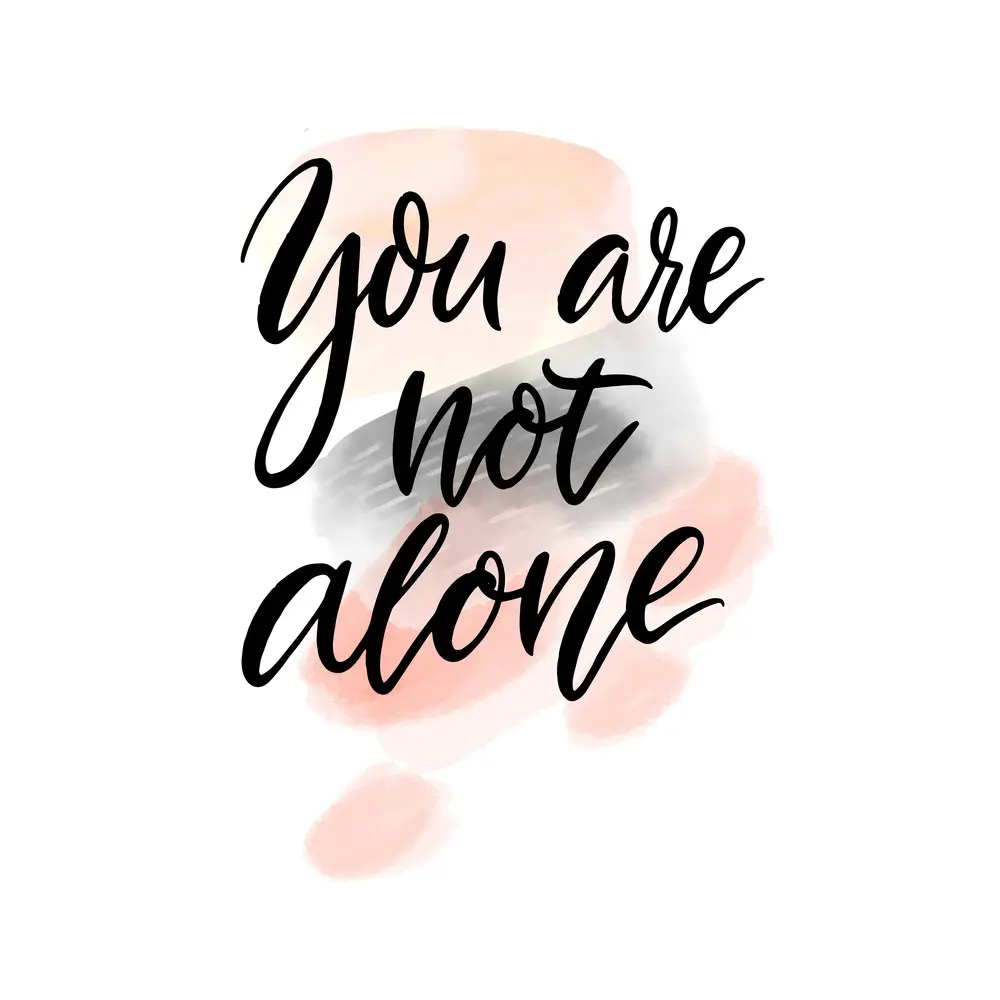
My Personal Experience with BetterHelp: More Than Just Therapy, It’s Tailored Support
Navigating the complexities of mental health is never a one-size-fits-all journey. As someone who identifies as demisexual and deals with depression linked to parental alienation, I’ve found refuge in BetterHelp. It’s more than just a platform for therapy; it’s a lifeline offering personalized support that truly gets me. No, I’m not using their specialized Pride Counseling service, but that doesn’t mean my unique needs are overlooked. BetterHelp provides many specialists who understand the nuances of my situation, from my sexual orientation to my specific emotional challenges. All this expertise is just a click away. Whether you’re tackling identity issues, confronting societal pressures, or navigating complex relationships, BetterHelp offers a bespoke approach to mental well-being. It’s been an invaluable tool in my mental health journey and could be yours, too.
Seek Clarity, Find Pride Counseling
About the Author: Navigating the Labyrinth of Life, Love, and Legal Battles
Hey there, I’m jacob Maslow, a demisexual mental health advocate, legal adviser, and a believer in the healing powers of long beach walks. Until about nine months ago, I lived what many would consider a dual life: a loving parent in one household, battling an uncooperative ex-spouse in another.
I take Lexapro for my mental health, have a long-standing relationship with therapy, and recently teamed up with BetterHelp for that extra support layer. My journey took a harsh turn when my ex, displaying classic narcissistic behavior, sabotaged reunification therapy for our kids and went on a crusade to alienate them from me. As her beauty wanes, her narcissism intensifies—a toxic combination that has led to an ongoing court battle.
Before all this chaos, my kids and I were inseparable. The sudden shift has had a jarring impact on my mental health, but it’s also fueled my drive to help others. I pen articles on mental health, sexual orientation, and the dark corridors of narcissism. My goal is to guide others through similar hardships—because nobody should walk this labyrinth alone.
I also run a legal site to support those stuck in the quicksand of family law, especially when faced with a spouse who weaponizes children instead of co-parenting.
My motto? Anyone can overcome their mental health issues and the chains of narcissistic abuse. So, let’s navigate this intricate maze together, shall we?
- 3 Ways Wearing a Hat Can Help Lower Your Stress Levels - April 19, 2025
- Breaking the Silence: Why Men’s Mental Health Matters More Than Ever - April 15, 2025
- How to Transform a Home’s Patio Space into a Relaxing Space - March 23, 2025
This site contains affiliate links to products. We will receive a commission for purchases made through these links.

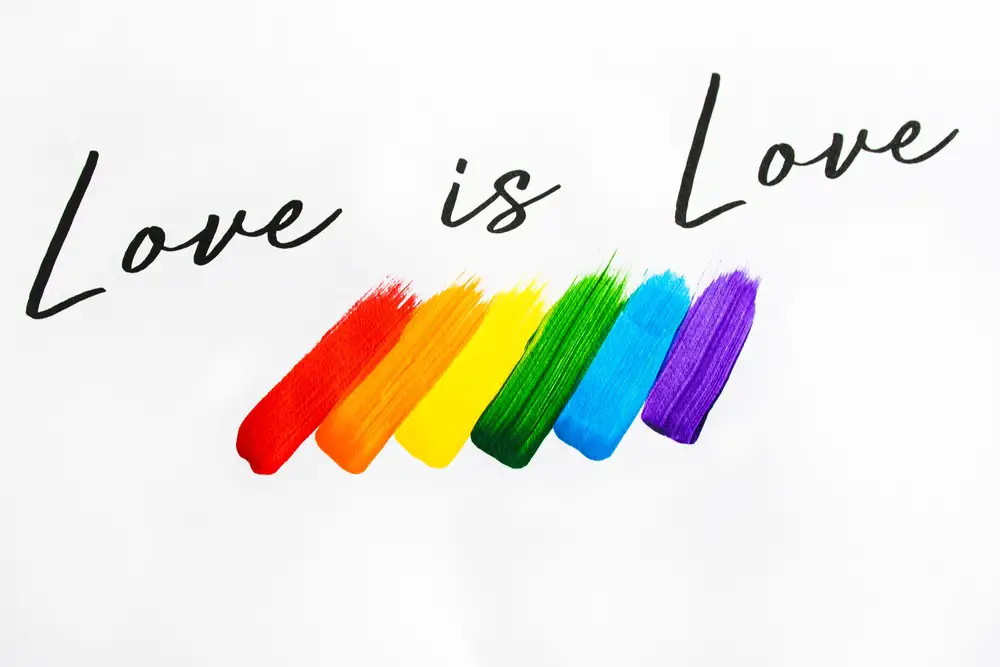
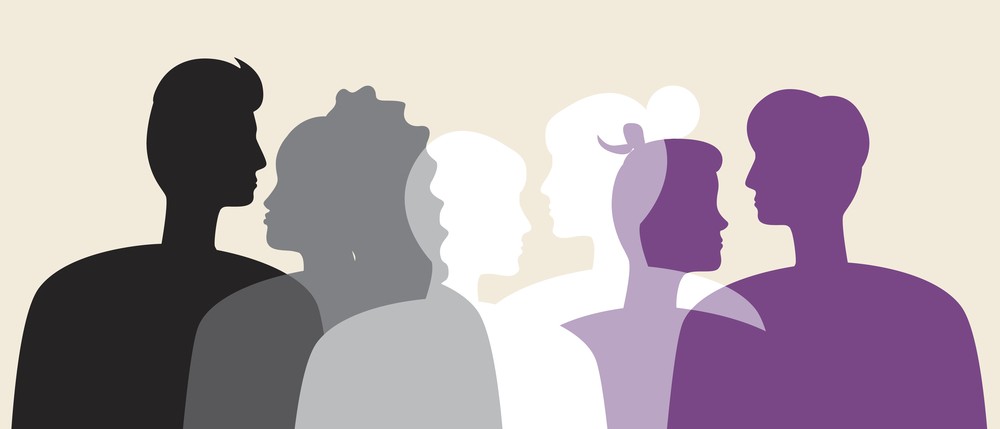 Understanding Sexual Attraction
Understanding Sexual Attraction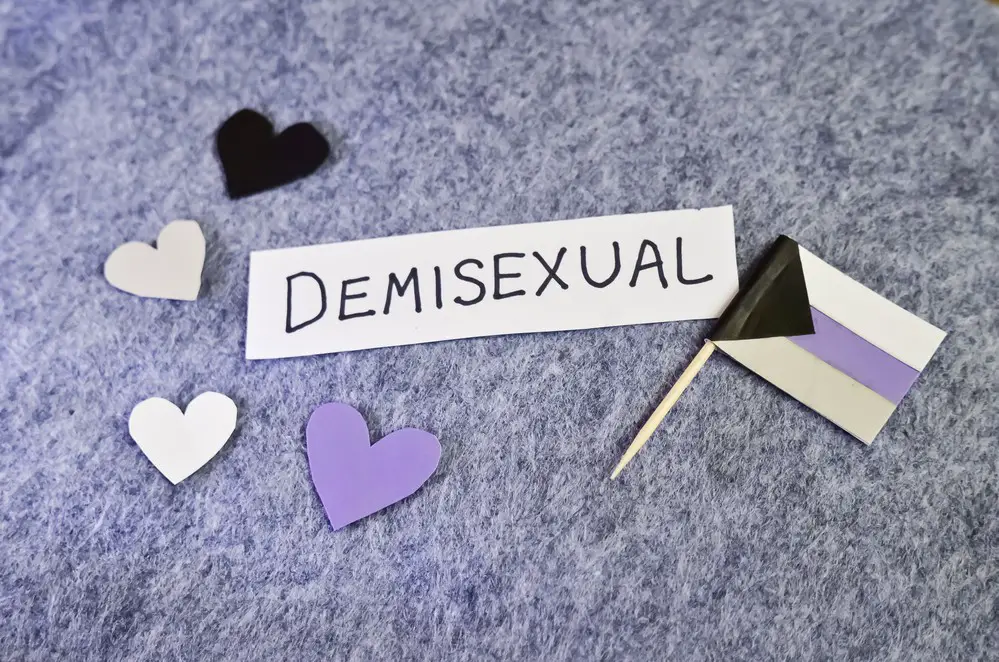 Identity and Self-Discovery
Identity and Self-Discovery Signs Therapy May Be Needed
Signs Therapy May Be Needed